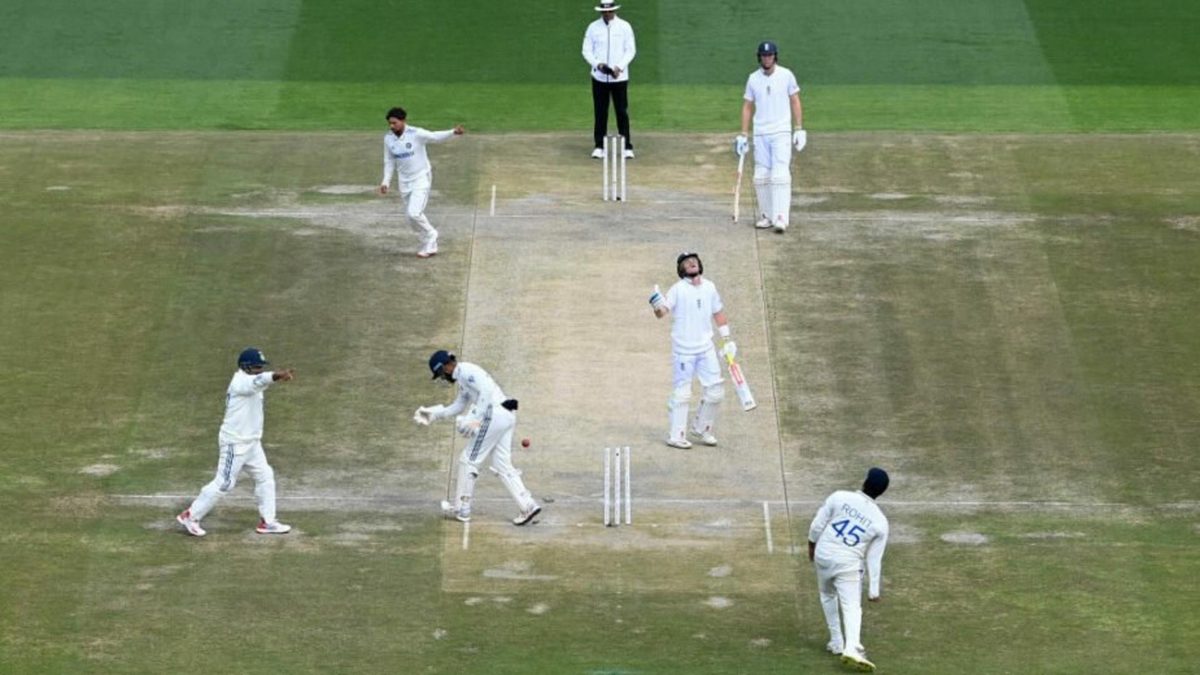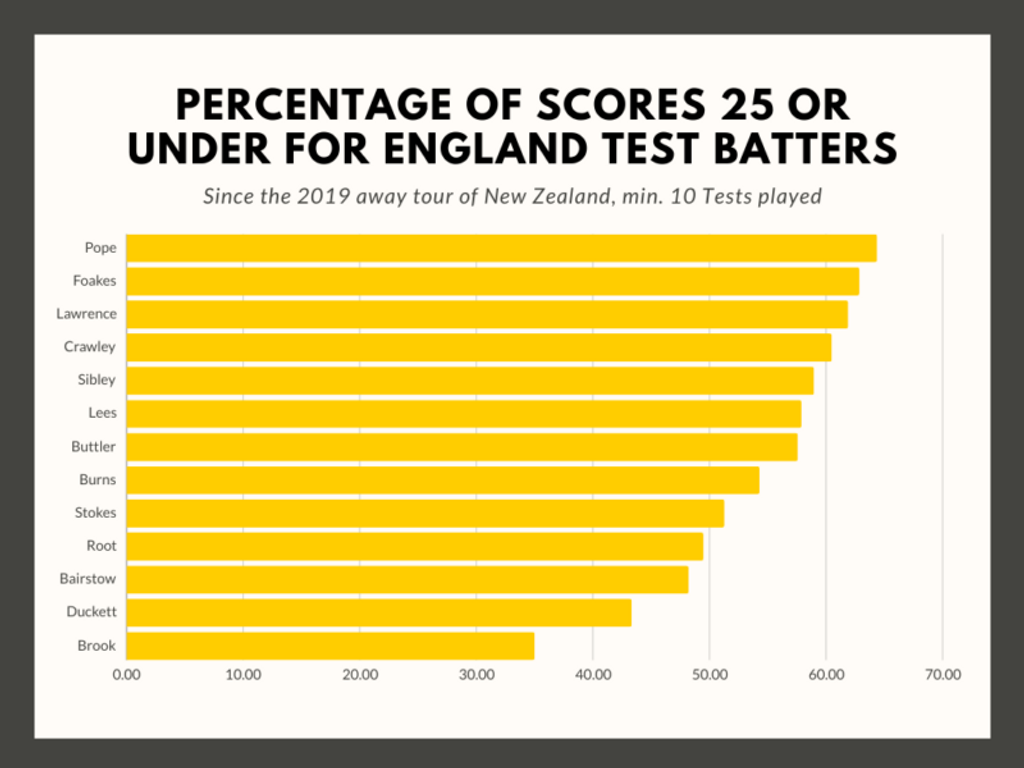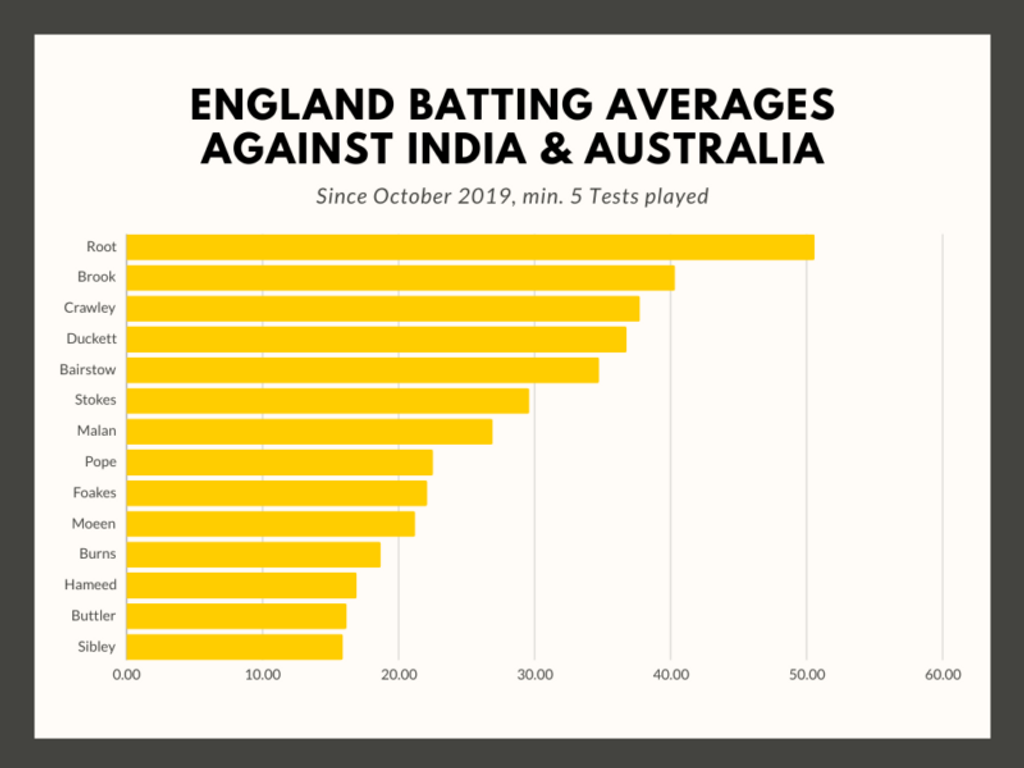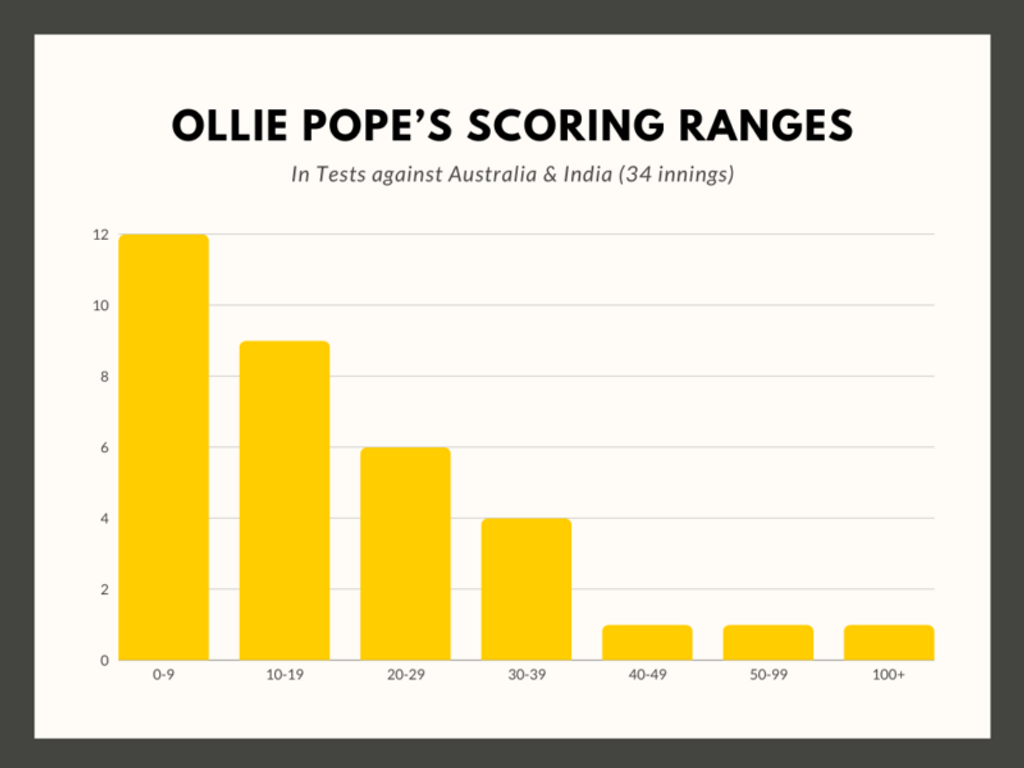
After England collapsed in familiar fashion in Dharamshala, Yas Rana looks at the case of Ollie Pope whose series has tailed off since his Hyderabad epic.
Subscribe to the Wisden Cricket YouTube channel for post-match analysis, player interviews, and much more.
There was a morose familiarity about England’s opening day collapse at Dharamshala, a déjà vu that generally accompanies the final stages of tours that get away from you. Even in their last three defeats England kept themselves in the hunt for large portions of a Test before India’s superiority ultimately pulled them ahead. Here, as well as Kuldeep Yadav bowled, England more than played a part in their own downfall, with every element of their under-par first innings effort a repeat of what we’ve previously seen this series.
Ben Duckett and Zak Crawley start steadily before a loose shot hands India an opening. Ollie Pope fails to battle through a skittish start, Joe Root is outdone by one of India’s champions, Jonny Bairstow’s counter runs out of steam just as it threatens to turn into something significant, Ben Stokes gets stuck against spin and Ben Foakes is rudderless with the tail before, on this occasion at least, a welcome change in approach after Tea.
As the series approaches its close, the final analysis doesn’t look pretty. None of England’s middle order have averaged more than 33 on a succession of pitches that have been routinely praised by both teams. Nine innings into the series, England’s numbers three to seven all average between 21 and 33.
They have all endured frustrating series, but perhaps none more so than Pope whose epic 196 in Hyderabad suggested that the England vice-captain had turned a corner against the world’s best sides. But with every passing innings, that performance, one that brought England’s sole win of the series, looks increasingly anomalous.
Since then, it’s been a familiar story for Pope against the top two teams in the world: Chaotic, skittish starts that stall before gathering momentum. His seven knocks since Hyderabad have brought the England No.3 a further 99 runs, a top score of 39 and six sub-25 scores.
His early freneticism is borne out in the numbers over the course of his career. He is a statistically poor starter. Since the 2019 tour of New Zealand when Pope was recalled to the side, he has failed to pass 25 in 65 per cent of his innings – the highest such percentage of any English top seven batter to play more than 10 Tests in that time.

Another familiar criticism of Pope, his record against Australia and India, remains. In the same time period, he averages 22 against them – comfortably lower than each of his competitors for a top six berth when Harry Brook presumably returns to the side in the summer.
Under Stokes’ captaincy overall, Pope averages an impressive round 40. But the breakdown of those numbers is telling; that number falls to 35 against World Test Championship opposition – in effect taking out his double hundred against Ireland – and drops to 26 against India and Australia. Against all non-Big Three opposition, he averages 50 under Stokes.

Pope’s early struggles merit a conversation about his method. It’s clearly not working against the best sides. In a conversation with Wisden Cricket Monthly at the end of the 2022 summer, Pope wrote off concerns about his frenetic starts. “The frenetic thing I’ve never really got,” Pope said, “because I’m ‘frenetic’ when I score hundreds as well. I’m always looking to get down the other end early in my innings, because that’s what works well for me. It’s a positive, but it can look a little bit like a negative on the bad days.”
The issue is, though, that the bad days are the norm against the best opposition. In 34 innings against Australia and India, Pope has reached 45 just twice.

Comparisons between Pope and Zak Crawley, who has quietly become England’s most dependable scorer over the last 10 Tests, are interesting. The pair are a month apart in age, have similar backgrounds, were integrated into the England set-up at a similar time and have both been backed to the hilt under the current regime.
Both, too, lost their places in the XI during the latter stages of Joe Root’s captaincy and both were picked for Stokes’ first series as captain. Under Stokes, it was initially Pope who excelled while even the tyre-pumping positivity of Brendon McCullum publicly doubted Crawley’s ability to be a consistent Test match opener after a difficult 2022 summer up top.
To Crawley’s credit, he has answered questions around his capacity to be consistent, registering back-to-back 400-run series against the best two teams on the planet. He embarked on a period of self-reflection and emerged a better player.
Barring a miracle, England will lose this series 4-1. It’s their first loss under Stokes, but it also means, after draws at home to Australia and away to New Zealand, it is 14 months since their last series win. If the first phase of the Bazball era was characterised by daring, convention-shattering gumption, the second is increasingly defined by an energy verging towards stubbornness. To improve, there needs to be a recognition that there is something that needs improving in the first place. The familiarity of their collapses and the manner of their dismissals suggests that that acknowledgement is missing.
“If you take the results by themselves you’d say we’ve gone backwards,” said Stokes before the fifth Test. “But we haven’t. The individuals and the team have massively evolved on this tour. Progression doesn’t always show itself with the results.”
On one level Stokes is right. Individuals such as Crawley and Duckett have come a long way from their previous struggles in India while a green spin attack has generally surpassed expectations, but that cannot be said for every player and Pope’s series, like those of Stokes, Bairstow, Root and Foakes, speak of, at best, stasis.
Pope is capable of better, but to do so will require an acknowledgement that there is something that needs improving in the first place.







